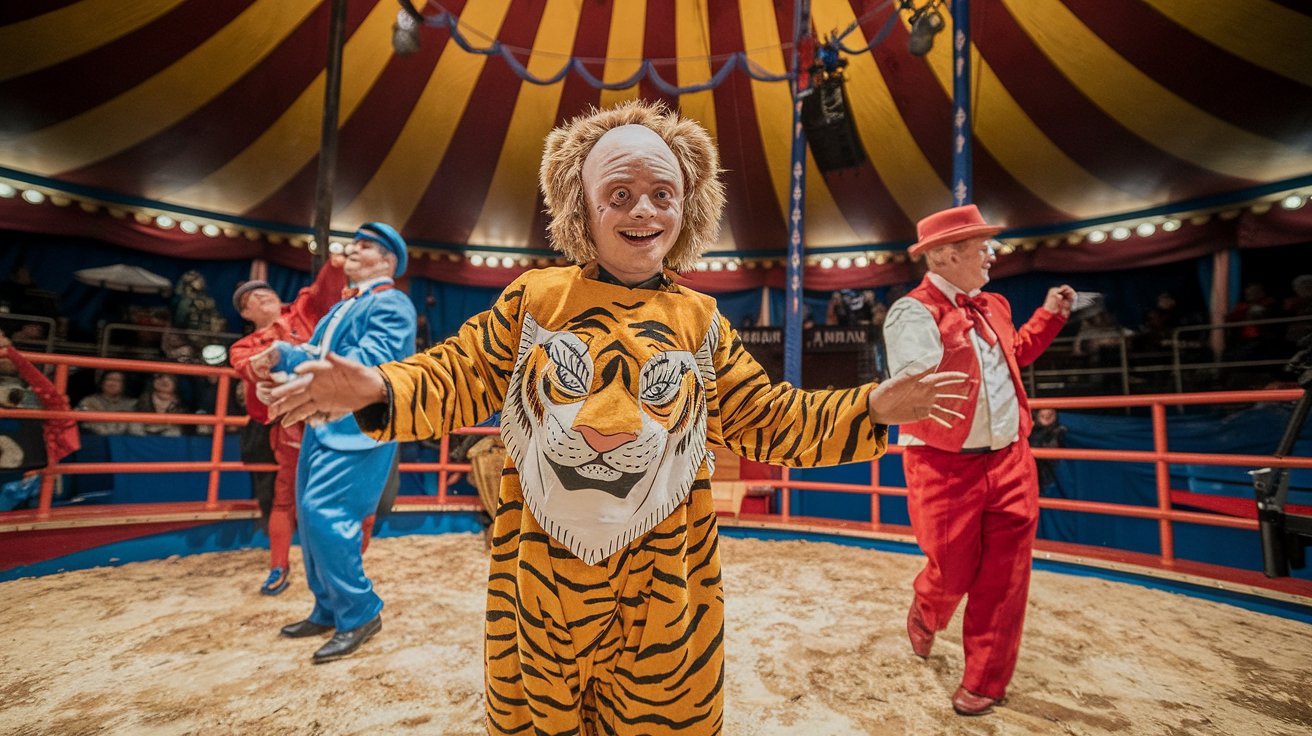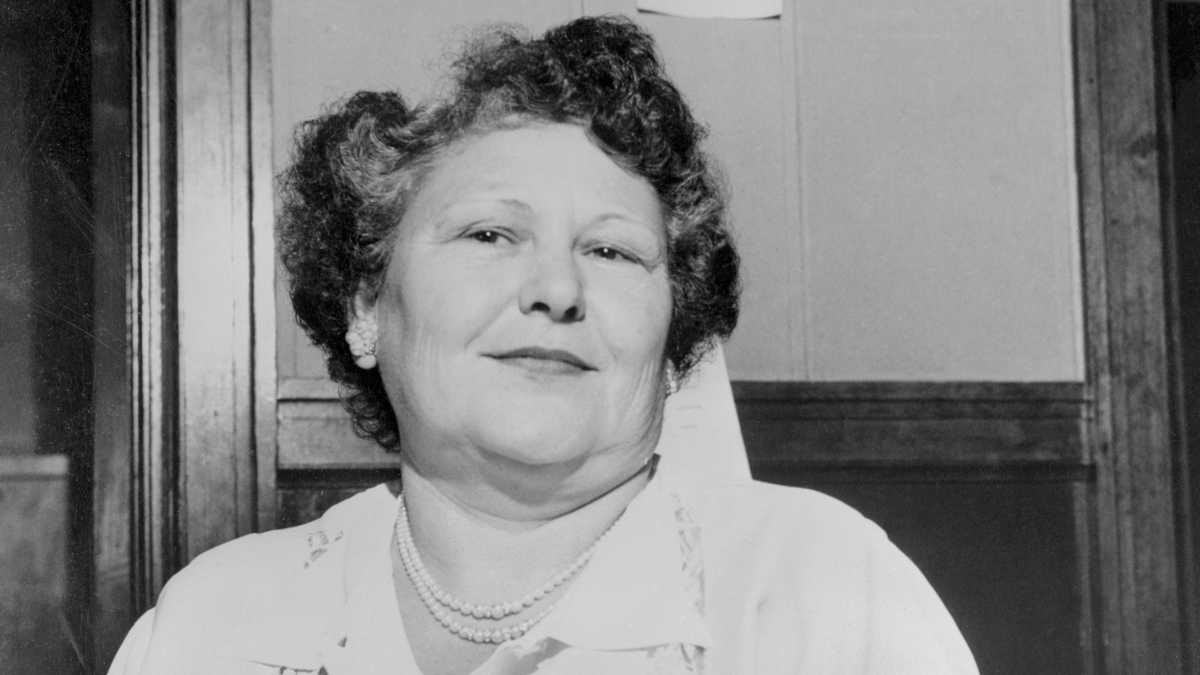
Who was Schlitzie? Schlitzie, also known as Schlitzie Surtees or Schlitze, was a famous sideshow performer in the early 20th century. Born with microcephaly, a condition that results in an abnormally small brain and skull, Schlitzie's unique appearance made him a major attraction in the circus world. Despite his intellectual disability, he captivated audiences with his performances and even appeared in the 1932 cult classic film Freaks. Schlitzie's life was a mix of tragedy and resilience, marked by both exploitation and moments of genuine care. His story offers a glimpse into the complex history of sideshow performers and how society viewed people with disabilities.
Key Takeaways:
- Schlitzie, a sideshow performer with microcephaly, faced exploitation and abuse but left a lasting impact on how people with disabilities are viewed in media, showcasing both the challenges and resilience of individuals with unique abilities.
- Despite facing abuse and taunting, Schlitzie's portrayal in the film "Freaks" has influenced how people with disabilities are represented in media, offering a more sympathetic and nuanced view of their experiences.
The Enigmatic Life of Schlitzie
Schlitzie, a sideshow performer with a unique appearance and abilities, captured the fascination of many during the early 20th century. His life, marked by both tragedy and resilience, offers a glimpse into the world of sideshow entertainment and the challenges faced by those with disabilities.
-
Birth and Identity: Schlitzie's true birth date, name, location, and parents are unknown. His death certificate and gravesite indicate that he was born on September 10, 1901, in The Bronx, New York, though some sources claim he was born in Santa Fe, New Mexico, or Yucatán, Mexico.
-
Early Life: Schlitzie was born with microcephaly, a condition that results in an abnormally small head and often severe intellectual disability. This condition led to his being billed as a "pinhead" or "missing link" in the sideshow circuit.
-
Family Background: There are conflicting accounts about Schlitzie's family. Some sources suggest he was born into a wealthy family, while others indicate that his parents were ashamed of him and kept him hidden away. It is believed that his sister, Atheila, also suffered from microcephaly.
Schlitzie's Career and Performances
Schlitzie's career in the sideshow circuit brought him both fame and exploitation. His unique appearance made him a major attraction, but it also subjected him to a life of constant performance and scrutiny.
-
Career Beginnings: Schlitzie's early life is shrouded in mystery, but it is known that he was sold to the traveling circus circuit at a young age. He was initially handled by various informal guardians before being employed by major circuses like Ringling Bros. and Barnum & Bailey Circus.
-
Sideshow Performer: Schlitzie was a major attraction in the sideshow circuit, performing under titles like "The Last of the Aztecs," "The Monkey Girl," and "What Is It?" He was often dressed in a muumuu and addressed with female pronouns to add to the shock value of his performances.
-
Physical Appearance: Schlitzie had a small stature (approximately 4 feet tall) and myopia. His microcephaly resulted in an unusually small brain and skull, which gave him a conical shape on the crown of his head.
-
Intellectual Disability: Schlitzie had the mental age of a three-year-old and was unable to fully care for himself. He could speak only in monosyllabic words and form a few simple phrases, but he could understand most of what was said to him and even mimic those around him.
-
Performance Skills: Despite his intellectual disability, Schlitzie was able to perform simple tasks and even learned to mimic director Tod Browning's voice perfectly in the film Freaks.
Schlitzie in Film
Schlitzie's foray into the world of film brought him further recognition. His roles, though limited, left a lasting impact on audiences and the portrayal of people with disabilities in media.
-
Film Debut: Schlitzie made his film debut in 1928 with The Sideshow, a drama set in a circus featuring real-life sideshow performers.
-
Freaks (1932): Schlitzie's most famous role was in Tod Browning's horror film Freaks. The film takes place at a carnival and features a number of genuine sideshow performers, including conjoined twins Daisy and Violet Hilton, "The Living Torso" Prince Randian, and dwarf siblings Harry and Daisy Earles.
-
Sympathetic Portrayal: Freaks is considered a startlingly sympathetic portrayal of circus performers, including those with disabilities or different bodies. Director Tod Browning had previously worked in a circus for years, which added to the authenticity of the film.
-
On-Set Issues: During the filming of Freaks, certain studio employees were upset at the presence of the actors playing the "freaks." Schlitzie and some of his colleagues had to stay in a purpose-built tent in a more remote area of the studio lot.
-
Role in Freaks: In Freaks, Schlitzie plays a version of himself. He wears dresses and is addressed using feminine pronouns, such as when Phroso the clown compliments "her" new dress and hat.
-
Career in Film: Schlitzie appeared in bit roles in various movies, including the 1934 exploitation film Tomorrow's Children, where he played a mentally defective criminal who undergoes forced sterilization.
Guardianship and Personal Life
Schlitzie's life off the stage was marked by a series of guardianships and personal relationships that shaped his experiences and well-being.
-
Guardianship Issues: Throughout his career, Schlitzie had multiple guardians, many of whom were unofficial. He was often passed from one circus owner to another, which led to inconsistent care and living conditions.
-
Legal Guardianship: In 1936, a chimpanzee trainer named George Surtees adopted Schlitzie and became his legal guardian. This was a significant change in his life, providing him with some stability and official care.
-
Continued Performances: Schlitzie continued to perform in sideshows until Surtees’ death in 1965. After that, he was committed to a Los Angeles hospital by Surtees’ daughter but was eventually discharged and put back into the care of Bill “Frenchy” Unks, a sword swallower and circus performer.
-
Depression and Retirement: Schlitzie's time in the hospital made him depressed. He missed the carnival life and the attention he received as a performer. He eventually retired from the circus and continued to perform on the sideshow circuit, traveling to places like Hawaii and London.
-
Street Performer: After retiring from the circus, Schlitzie became a popular street performer in Hollywood. He would often be accompanied by caretakers selling souvenir pictures from his circus days. One of his favorite spots was Santa Monica Boulevard, where he loved to feed the pigeons and ducks.
-
Personal Relationships: Schlitzie had a few close relationships during his life. One notable friend was Wolf Krakowski, a videographer, author, and musician who shared personal tales about Schlitzie. Krakowski described Schlitzie as an affectionate, exuberant, sociable person who loved dancing and being the center of attention.
Challenges and Legacy
Despite his popularity, Schlitzie faced significant challenges and abuse. His legacy, however, continues to influence how people with disabilities are viewed and represented in media.
-
Abuse and Taunting: Despite his popularity, Schlitzie faced significant abuse and taunting from audiences. People would throw bottles and lit cigarettes at him, which broke his heart and angered those who knew him.
-
Cultural Legacy: Freaks was banned in the United Kingdom for thirty years due to its depiction of sideshow performers. The film's cultural legacy is complex, reflecting both the exploitation of people with disabilities and the sympathetic portrayal of those individuals.
-
Health Issues: Schlitzie's urinary incontinence, which obliged him to wear diapers, made dresses practical for his care needs. However, it is possible that this condition developed later in life and was simply a side-effect of age.
-
Mental Capacity: Schlitzie's diminished mental capacity was a result of his microcephaly. He had the cognitive abilities of a three-year-old but could perform simple tasks and understand most conversations.
-
Mimicry Skills: Schlitzie's ability to mimic those around him was remarkable. He could even mimic director Tod Browning's voice perfectly, which added to his performance skills in Freaks.
-
Film Impact: Freaks was a financial failure upon its release but has since become a cult classic. The film's impact on the portrayal of people with disabilities in media is significant, offering a more sympathetic view than many films of its time.
-
Career Highlights: Schlitzie performed for some of the biggest circuses in North America throughout the 1920s and ’30s, including Ringling Bros., Barnum & Bailey, Clyde Beatty Circus, Tom Mix Circus, Crafts 20 Big Shows, Foley & Burke Carnival, West Coast Shows, Vanteen & Lee Circus Sideshow, and the Dobritsch International Circus.
-
Billed Performances: Schlitzie was billed under various titles such as "What Is It?", "Pinhead", and "The Last of the Aztecs." These titles added to the mystique of his unusual appearance and performance style.
-
Social Perception: The way society perceived people with disabilities like Schlitzie was very different from today. They were often viewed as oddities or freaks, rather than individuals with unique experiences and abilities.
-
Legacy in Media: Schlitzie's appearance in Freaks has made him a cultural icon. His portrayal in the film has influenced how people with disabilities are represented in media, offering a more nuanced view of their experiences.
-
Personal Life: Despite his fame, Schlitzie's personal life remained largely private. His relationships and daily life were often overshadowed by his performances and the attention he received from audiences.
-
Death and Burial: Schlitzie died on September 24, 1971, at the age of 70. He is buried at the Queen of Heaven Cemetery in Rowland Heights, California. This was a relatively long life for someone with microcephaly, reflecting both his resilience and the care he received during his later years.
-
Historical Context: The sideshow circuit where Schlitzie performed was a significant part of early 20th-century entertainment. It provided a platform for people with unique appearances or abilities to gain fame and recognition, albeit often at the expense of their dignity and well-being.
-
Controversy Surrounding Freaks: The release of Freaks was met with significant controversy. Many audiences were scandalized by the appearance of sideshow performers, leading to the film's ban in several countries.
-
Enduring Impact: Despite the controversies surrounding his performances and the film Freaks, Schlitzie's legacy endures. He remains a symbol of the complex and often tragic history of people with disabilities in entertainment, highlighting both the exploitation and the sympathetic portrayals that have shaped our understanding of these individuals over time.
Schlitzie's Lasting Impact
Schlitzie's life was a mix of tragedy and resilience. Born with microcephaly, he became a famous sideshow performer, captivating audiences with his unique appearance and abilities. Despite facing significant challenges, including intellectual disability and exploitation, Schlitzie found joy in performing and connecting with people. His role in the film Freaks remains iconic, highlighting both the exploitation and sympathetic portrayal of people with disabilities. Schlitzie's story sheds light on the complex history of entertainment and the treatment of individuals with unique conditions. His legacy endures, reminding us of the importance of compassion and understanding. Schlitzie's life, marked by both hardship and moments of happiness, continues to inspire and educate, offering a nuanced perspective on the experiences of those who lived on the fringes of society. His enduring impact is a testament to his resilience and the changing perceptions of people with disabilities.
Frequently Asked Questions
Was this page helpful?
Our commitment to delivering trustworthy and engaging content is at the heart of what we do. Each fact on our site is contributed by real users like you, bringing a wealth of diverse insights and information. To ensure the highest standards of accuracy and reliability, our dedicated editors meticulously review each submission. This process guarantees that the facts we share are not only fascinating but also credible. Trust in our commitment to quality and authenticity as you explore and learn with us.


